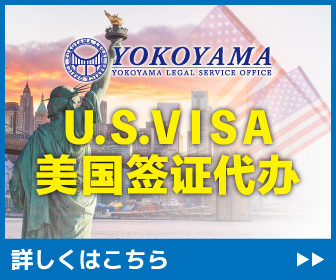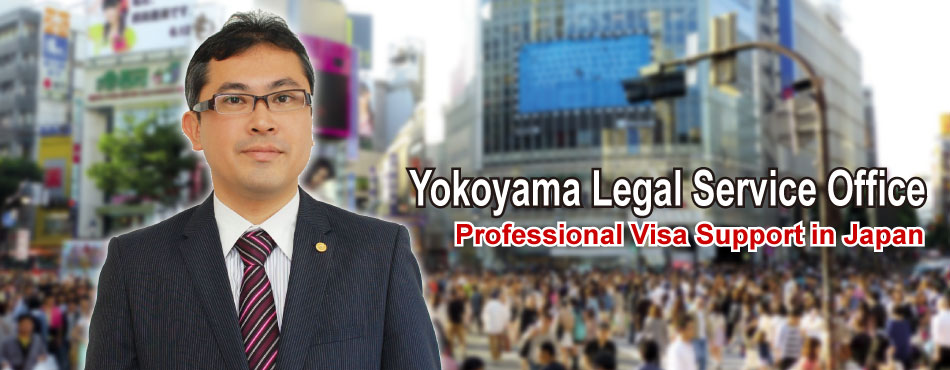コンテンツ
- Understand Japan’s Residence tax!
- Where do I pay resident tax?
- What is the resident tax rate? Does it depend on where you live?
- I have just arrived in Japan and my company does not pay my resident tax. Is there a problem?
- Resident tax is paid afterwards.
- Difference between Special and General tax collection. Foreigners should pay special attention.
- Contact Us!
Understand Japan’s Residence tax!
A company employee with an annual income of JPY 5 million pays roughly around JPY 200,000 in resident tax (Juminzei住民税) in Japan every year. This is quite a lot of money. If you understand resident tax well, you won’t be in a hurry when you are suddenly asked to pay it. Also, if you understand resident tax well, you will know how to avoid your side jobs being discovered, and you may even be able to get a permanent residence visa smoothly.
Where do I pay resident tax?
Where do you pay resident tax?
The answer is: you pay it to the prefecture and municipality governments, Ward Office in Japan where you reside. Familiar administrative services that we need to live in Japan, such as education, welfare, waste disposal, police, fire and emergency services, are provided by the prefectural and municipal governments, but in order to enjoy these services, the resident tax, which is paid by all residents regardless of whether they are foreign or Japanese, is required. Simply put, it is like a “membership fee” for living in Japan.
All resident taxes are calculated by the Japanese municipality, ward office. Whether your resident tax is deducted from your company’s salary or if you have filed your own tax return (Kakutei Shinkoku確定申告), all resident taxes are calculated by the municipality. Therefore, if you have any questions or need advice on your resident tax, go to the Ward office (Kuyakusyo区役所), not the tax office (Zeimusho税務署).
What is the resident tax rate? Does it depend on where you live?
Do you know what the resident tax rate is? Does the resident tax rate change depending on where you live? Have you ever heard that your resident tax rate became higher after you moved?
In reality, however, the resident tax rate remains almost the same no matter where you live in Japan. The resident tax rate remains almost the same. It is worth remembering that the resident tax rate is roughly 10%.
Income tax, on the other hand, is a progressive tax system, which means that the tax rate changes over seven levels. Resident tax is very simple in comparison.
Another cost that varies greatly depending on where you live in Japan is not the resident tax, but the “National Health Insurance premium” (Kokumin Kenko Hoken国民健康保険). This is something you might want to keep in mind. And remember this when deciding where in Japan you will live.
The calculation process for resident tax is almost the same as for income tax (Shotokuzei所得税), but it does not directly multiply the amount of your annual income by 10%. It is calculated from the amount of taxable income minus expenses and deductions multiply tax rate (10%). For example, a company employee with an annual income of 5 million yen, who is single and lives alone, does not have an annual income of 5 million yen x 20%, which is 500,000 yen, from an annual income of 5 million yen, the company employee deducts deductions for employment income, etc. and the taxable income is around 2 million yen. Resident tax is levied on this 2 million yen, so 2 million yen x 10%, or around 200,000 yen. Incidentally, there is one more point that differs from income tax: resident tax is calculated based on the taxable income of the previous year, not this year’s income.
Taxable income is calculated by subtracting expenses and deductions from sales income. There are various deductions for income tax and resident tax, of which the amount that can be deducted is different: the basic deduction. The amount that can be deducted for resident tax is smaller. Fewer deductions means you pay more tax than income tax. If you work as a part-time and have an annual income of 1,020,000 yen, and you think that because it is within 1,030,000 yen, you will not have to pay tax, you may not have to pay income tax, but only resident tax. The reason for this is that the basic resident tax deduction is smaller than that of income tax. Resident tax is payable when annual income exceeds approximately 1 million yen.
In addition to the per capita income tax, which increases in proportion to taxable income, there is another per capita tax. The income tax rate is 10% of taxable income. The per capita tax is around 5,000 yen. It is the same 5,000 yen for a person with an annual income of 5 million yen and for a person with an annual income of 100 million yen.
I have just arrived in Japan and my company does not pay my resident tax. Is there a problem?
Why hasn’t resident tax been deducted from my first salary after I arrived in Japan?
This is not because the company you work for made a mistake. The correct answer is because it will be deducted from next year’s salary. First, let’s check the main items deducted from your company’s salary. Income tax, resident tax and social insurance. The timing of deductions differs for income tax and resident tax. Income tax is paid in advance and is deducted from the month you first arrive in Japan and start working. Resident tax is paid later, so payment starts in June of the following year. Income tax is paid in advance. For this reason, this year’s tax is roughly calculated in advance and paid in advance, so every December, the company performs a year-end adjustment and returns the amount paid in excess. This is called a refund, which everyone loves. Of course, if you paid less income tax in advance, you will have to pay additional tax.
Resident tax is paid to the municipality, ward office in which you live as of 1st January each year. For this reason, foreigners who come to Japan in the middle of the year do not have to pay residence tax for that year. Also note that when you move to a new city, you must also pay resident tax for the year in which you move. For example, if you move from Minato Ward in Tokyo to Nagoya City in March this year, you will still pay resident tax to Minato Ward from June this year onwards, as you lived there as of 1st January this year. Although you are not too concerned about the resident tax deducted by your company, when you pay the regular resident tax yourself, many foreign people receive the resident tax payment slip from Minato Ward in June and wonder why it comes from the place you lived before you moved, and suspect that perhaps they are being charged double resident tax, but this is not a mistake on the part of the administrative department.
Resident tax is paid afterwards.
Income tax is paid in advance, while residence tax is paid later. Resident tax is calculated based on the previous year’s taxable income and is deducted from your monthly salary from June to May of the following year. The system of paying resident tax by deductions from the company’s wages is called “Salary Deductions” or “Special collection” (Tokubetsu Choshu特別徴収). Take a look at your June pay slip from your second year in Japan. You will see that your monthly salary has not changed, but your take-home pay has decreased. This is because resident tax is deducted. And please be careful when you leave the company. This is because resident tax is paid later, so the resident tax on the previous year’s taxable income has to be paid after you leave the company, when your income is reduced. To avoid panicking at sudden expenses, put aside a lifestyle defence fund that includes resident tax. For example, if your annual income last year was 100 million yen, but this year it drops to 10 million yen, the resident tax you pay from June this year will be the resident tax on last year’s annual income of 100 million yen. It is often heard that people have difficulty in paying resident tax if their annual income drops significantly. Resident tax is thus done on a time-lag basis. You need to make sure that you have enough left over for your resident tax payment.
Difference between Special and General tax collection. Foreigners should pay special attention.
Earlier, we talked about “special collection”. The system of paying resident tax by deducting it from your company’s salary is called “special collection”.
There are two ways of paying residence tax: “special collection” and “general collection” (Futsu Choshu普通徴収). In special collection, the company deducts the tax from your salary and the company pays it, whereas in “general collection”, it means that direct payment by individual taxpayer, you have to pay tax yourself.
If you intend to work a second job and do not want your company to know about it, choose ‘general collection’ as the method of paying resident tax and pay resident tax on your second job yourself. The way to pay resident tax on your side job yourself is very simple. Simply circle the box for paying it yourself when you file your tax return (Kakutei Shinkoku確定申告). There are two things you need to tell them that “Only payroll income from your main job should be subject to special collection. Other income should be levied general collection.” Tell them this pint. This way, your company will not know about your side job.
However, if you are a foreigner, this may be a violation of the Immigration Control Act, depending on your visa status and the nature of your side job.
You should also be aware of this when you apply for permanent residence (PR). If you are using a special tax collection, there will not be any tax liability breach issues relating to your resident tax.
However, with general collection levy, you will need to prove that you have properly paid your resident tax every year, every term and within the appropriate deadlines. Specifically, you will need to submit copies of receipts for up to five years of paid resident tax.
For example, in the case of Tokyo’s 23 wards, the tax is paid in four installments each year in June, August, October and January of the following year. As well as paying in four instalments, you can also pay in one lump sum for the whole year in the first month of June. If you can afford it, we recommend paying in one lump sum. If the receipt is lost, you will not be able to meet your burden of proof. A tax payment certificate can be issued at the municipal office or ward office, but this certificate only states whether the payment has been made or not. No certificate is issued as to whether the payment was made on time. However, the immigration bureau will know that you have not paid the tax on time and will probably refuse you a permanent residence visa on that basis.
Therefore, if you want to apply for a permanent residence visa, we recommend that you do not rashly change from ‘special collection’ to ‘general collection’. It is not too late to apply for a permanent residence visa.
However, if your salary from your company is low and you do not earn enough per annum to apply for a permanent residence visa at this rate, you may want to consider starting a second job.
Contact Us!
Other Question?
Please feel free to contact us for advice!
First, please call +81-3-6264-9388 or leave a message on our website with your inquiry. (Please contact us by phone or consultation page.)
TEL: +81-3-6264-9388
WeChat: visa_hengshan
Line ID: visa_yokoyama
Email: info@lawoffice-yokoyama.com













